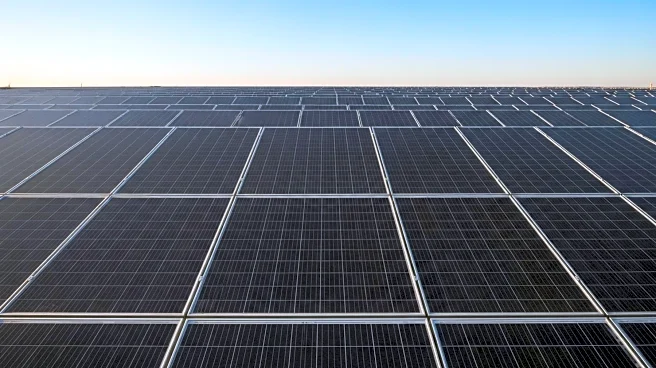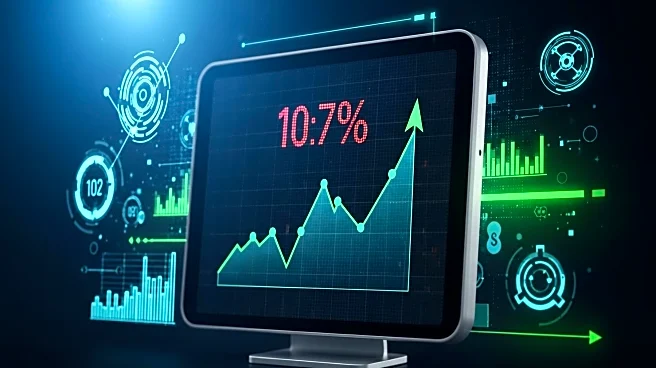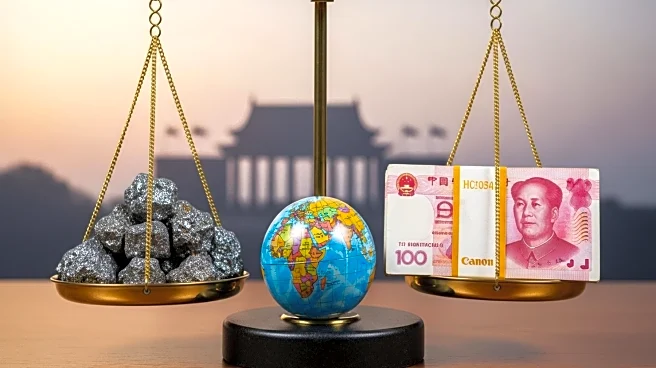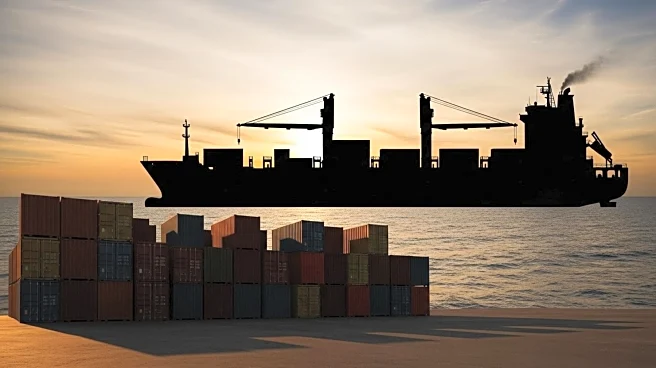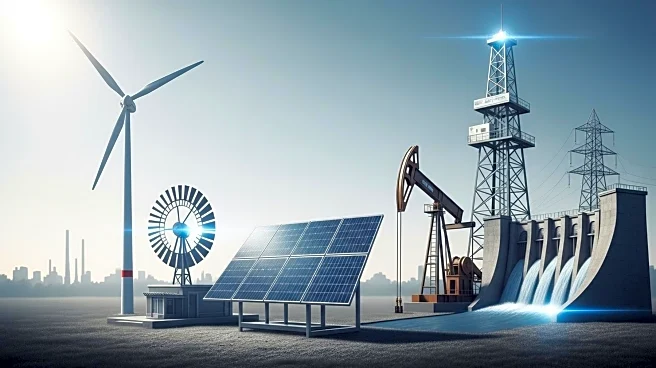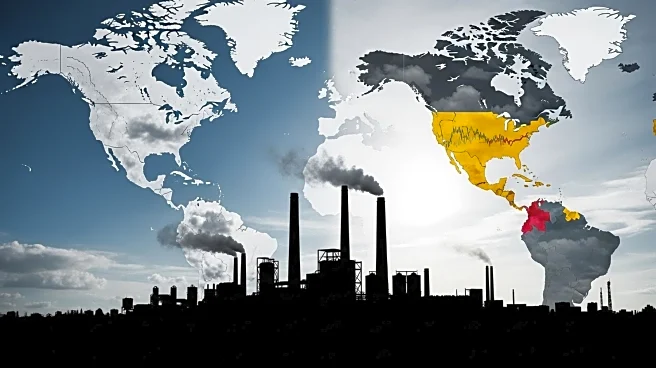What's Happening?
Chinese solar stocks experienced a significant surge following reports from state media indicating that authorities are considering implementing controls on solar production capacity. The industry, which is the largest in the world, is currently facing a severe oversupply issue, with production capacity nearly double the global demand. This has led to unsustainably low prices, causing financial distress among solar companies. Recently, Haikong Sanxin, a solar glass producer, filed for bankruptcy, highlighting the financial challenges within the sector. The Securities Times reported that a notice regarding the regulation and control of solar production capacity might be released soon, although specific details were not provided.
Why It's Important?
The potential regulation of solar production capacity in China is crucial as it could stabilize the market by addressing the oversupply issue. This move may prevent further bankruptcies and financial losses within the industry, which have been prevalent due to the current market conditions. The stabilization of the solar industry is significant not only for China but also for global markets, as China plays a pivotal role in solar technology production. U.S. companies and investors involved in renewable energy may be affected by these developments, as changes in Chinese production can influence global supply chains and pricing structures.
What's Next?
If the Chinese government proceeds with implementing capacity controls, it could lead to a restructuring of the solar industry, potentially reducing the number of active producers and stabilizing prices. This may also prompt other countries to reassess their reliance on Chinese solar products and explore alternative sources or increase domestic production. Stakeholders, including international investors and renewable energy companies, will likely monitor these developments closely to adjust their strategies accordingly.
Beyond the Headlines
The oversupply crisis in China's solar industry underscores the challenges of balancing rapid industrial growth with sustainable market practices. It raises questions about the long-term viability of aggressive production strategies without adequate demand forecasting. Additionally, this situation may prompt discussions on the environmental impact of overproduction and the need for more sustainable industrial policies.
